
Franz Kline was an American painter. He is associated with the Abstract Expressionist movement of the 1940s and 1950s. Kline, along with other action painters like Jackson Pollock, Willem de Kooning, Robert Motherwell, John Ferren, and Lee Krasner, as well as local poets, dancers, and musicians came to be known as the informal group, the New York School. Although he explored the same innovations to painting as the other artists in this group, Kline's work is distinct in itself and has been revered since the 1950s.

Alexander Porfyrovych Archipenko was a Ukrainian-American avant-garde artist, sculptor, and graphic artist, active in France and the United States. He was one of the first to apply the principles of Cubism to architecture, analyzing human figure into geometrical forms.
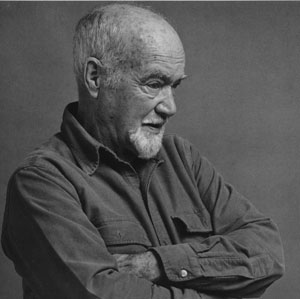
Kenneth Callahan (1905–1986) was an American painter and muralist who served as a catalyst for Northwest artists in the mid-20th century through his own painting, his work as assistant director and curator at the Seattle Art Museum, and his writings about contemporary art. Born in Eastern Washington and largely self-taught as an artist, Callahan was committed to an art that went beyond the merely illustrative. He enrolled at the University of Washington in 1924 but did not stay long. He traveled widely, absorbing influences from the different countries and cultures he experienced. His talent was recognized early; his work was included in the first Whitney Biennial exhibition in 1933 and he went on to a distinguished painting career. Callahan is identified as one of the Northwest Mystics – along with Guy Anderson, Morris Graves, and Mark Tobey, who shared a muted palette and strong interest in Asian aesthetics.
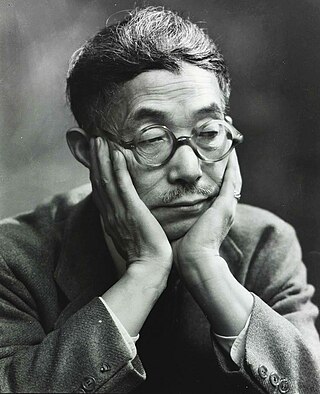
Yasuo Kuniyoshi was an eminent 20th-century Japanese-American painter, photographer and printmaker.

Ghulam Mohammed Sheikh is a painter, poet and art critic from Gujarat, India. He was awarded the Padma Shri in 1983 and Padmabhushan in 2014 for his contribution in field of art.
William T. Williams is an American painter and educator. He is known for his process-based approach to painting that engages motifs drawn from personal memory and cultural narrative to create non-referential, abstract compositions. He was a Professor of Art at Brooklyn College, City University of New York from 1971 to 2008.
John Button was an American artist, well known for his city-scapes. Educated at the University of California, Berkeley then moved to New York City in the early 1950s. He became friends with Fairfield Porter and Frank O'Hara and assumed his part in the New York School of Painters and Poets.

Dan Owen Dailey is an American artist and educator, known for his sculpture. With the support of a team of artists and crafts people, he creates sculptures and functional objects in glass and metal. He has taught at many glass programs and is professor emeritus at the Massachusetts College of Art, where he founded the glass program.
Robert Amft was a painter, sculptor, photographer, designer born in Chicago.
Laurence Bruce Fink was an American photographer and educator, best known for his black-and-white images of people at parties and in other social situations.
Peter Grippe was an American sculptor, printmaker, and painter. As a sculptor, he worked in bronze, terracotta, wire, plaster, and found objects. His "Monument to Hiroshima" series (1963) used found objects cast in bronze sculptures to evoke the chaotic humanity of the Japanese city after its incineration by atomic bomb. Other Grippe Surrealist sculptural works address less warlike themes, including that of city life. However, his expertise extended beyond sculpture to ink drawings, watercolor painting, and printmaking (intaglio). He joined and later directed Atelier 17, the intaglio studio founded in London and moved to New York at the beginning of World War II by its founder, Stanley William Hayter. Today, Grippe's 21 Etchings and Poems, a part of the permanent collection at the Davis Museum and Cultural Center at Wellesley College in Wellesley, Massachusetts, is available as part of the museum's virtual collection.
Ed Kerns is an American abstract artist and educator. Kerns studied with the noted Abstract-Expressionist painter, Grace Hartigan and through the elder artist came to know and work with many artists of that generation including, Phillip Guston, Willem de Kooning, James Brooks, Ernest Briggs, Richard Diebenkorn and Sam Francis.
Karl Stirner was a Germany-born American sculptor known internationally for his metalwork. His work has been shown at the Museum of Modern Art in New York, the Pennsylvania Academy of Fine Arts, the Philadelphia Museum of Art, the Corcoran Gallery of Art, the La Jolla Museum of Contemporary Art, the James A. Michener Art Museum, the Grounds for Sculpture in Hamilton, New Jersey, the Delaware Art Museum, and other locations. Stirner also participated in exhibitions in Taiwan, Hungary, and Italy.
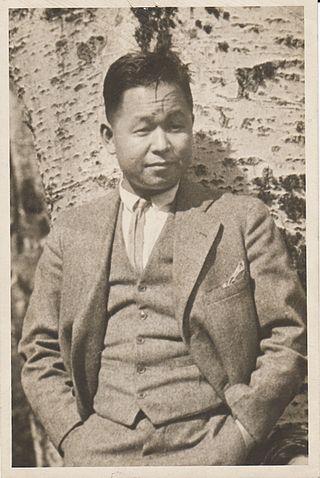
Kamekichi Tokita (1897–1948) was a Japanese American painter and diarist. He immigrated to the United States from Japan in 1919, and lived in Seattle, Washington's Japantown/Nihonmachi district. He was a prominent figure in the Pacific Northwest art world of the 1930s, with paintings regularly included in major exhibitions.
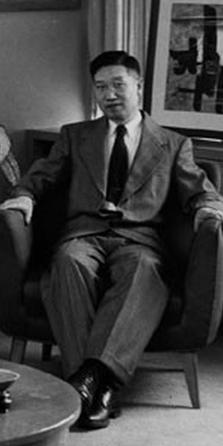
Kenjiro Nomura was a Japanese American painter. Immigrating to the United States from Japan as a boy, he became a well-known artist in the Pacific Northwest in the 1920s and 30s.
Malle Leis was an Estonian painter and graphic artist. Her works mostly represent abstract forms in nature, including flowers, fruits, and vegetables. She developed a silk screen technique that became her trademark.
Constance Coleman Richardson (1905–2002) was an American painter best known for her American Scene landscapes and interplay of light on figures, evocative of Edward Hopper. She attended Vassar College and Pennsylvania Academy of the Fine Arts and was married to art historian and museum director Edgar Preston Richardson from 1931 until his death in 1985.
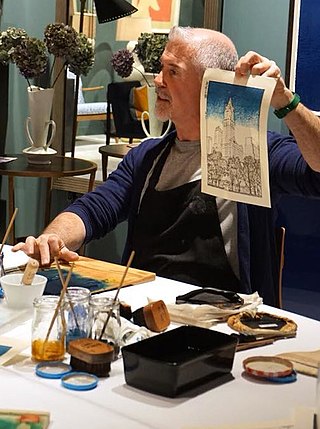
Paul Binnie is a Scottish artist working in the Japanese tradition of woodblock printing. His work is reflective of the shin-hanga artists of the early to mid-20th century, employing subjects such as landscapes, tattoos, and bijin.
Sidney Goodman was an American figurative painter and draftsman from Philadelphia, PA who explored the human form. Goodman received public notice in the early 1960s for his oil paintings, leading to his inclusion in the 1973 Whitney Biennial. In 1996, the Philadelphia Museum of Art presented a retrospective show of Goodman's paintings and drawings.

Samuel Joseph Brown Jr. (1907–1994) was a watercolorist, printmaker, and educator. He was the first African American artist hired to produce work for the Public Works of Art Project, a precursor to the Work Progress Administration's Federal Art Project. Brown often depicted the lives of African Americans in his paintings. He worked primarily in watercolor and oils, and he produced portraits, landscapes and prints.